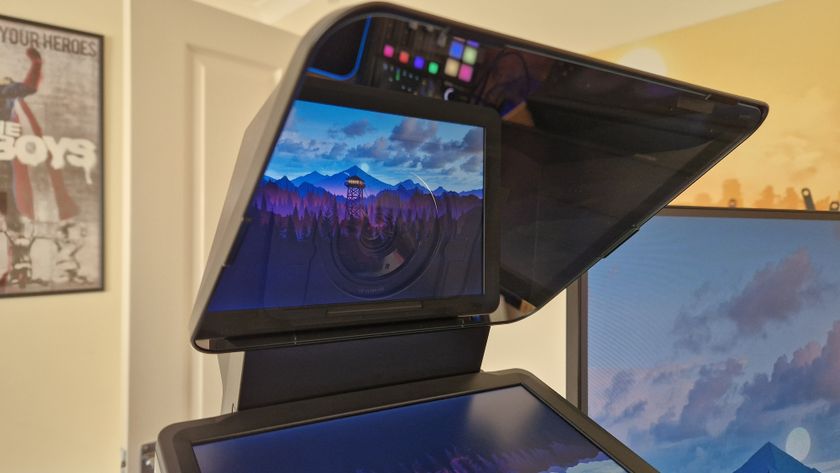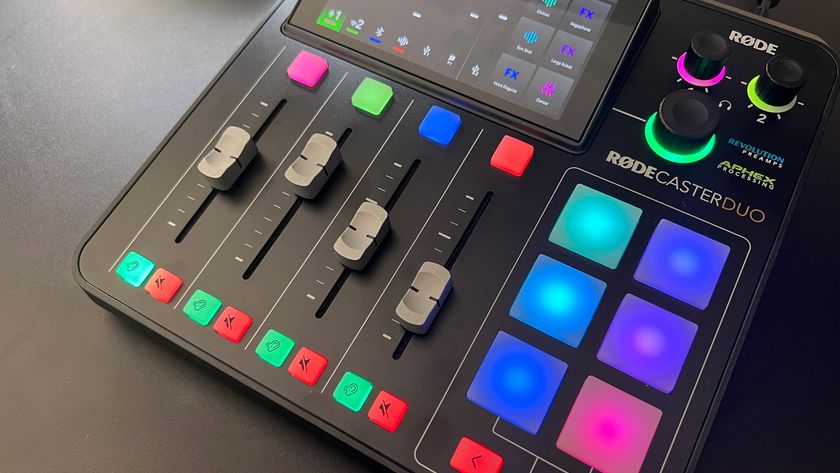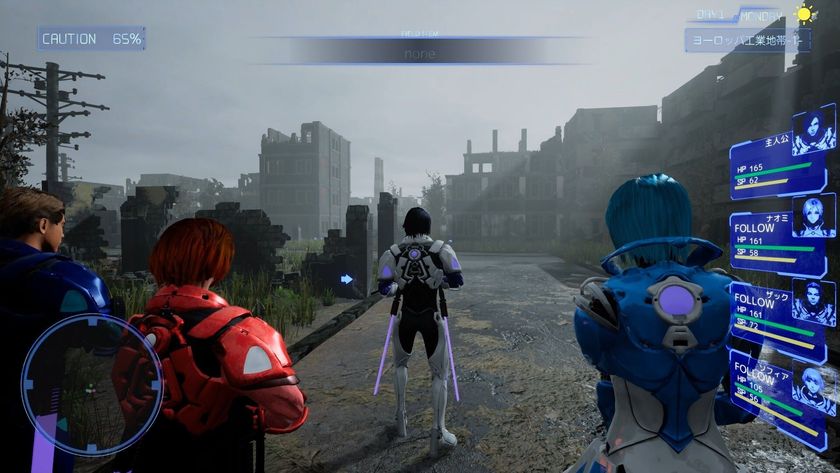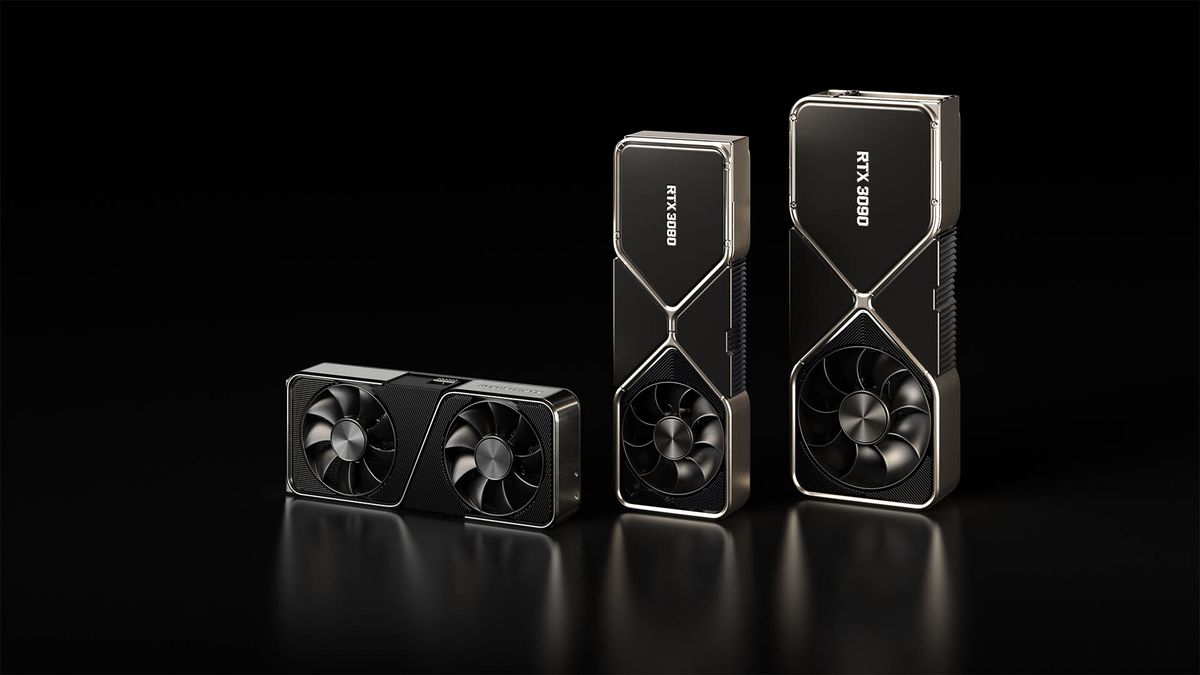
Yesterday Nivida announced the latest new range of graphics cards that will be available for our gaming rigs later this year: the RTX 30 series. They'll be launching this September and October.
In a now-customary online live-stream show, the graphics behemoth pulled back the curtain on its newest cards. What was revealed is the biggest generational gap between major GPU series in years; they offer a significant step up in terms of power and speed.
The lead card revealed was the RTX 3080. This will offer speeds and powers (in the broadest sense) that are two times that of the 2080 card of this current generation, with 19gbps speed from 10GB of the brand-new GDDR6X memory. This will lead the way in making 4K 60fps gaming a reality for home gamers when it releases at the surprisingly-affordable $699 starting price.
Next to be unveiled was the RTX 3070 card, and we really like the look of it. Sitting below the 3080 (naturally), its main selling points are still extraordinarily attractive. It'll be toned down a bit by having 8GB of GDDR6 memory, but will still offer a performance that's double the 2070 and comfortably faster than the current behemoth, the 2080Ti. And all for just $499.
If you ask us the sweet spot for PC gaming is a high refresh / frame rate at a 1440p resolution, so this card seems to be ideal for maxing out those settings - as well as being able to push into 4K territory too.
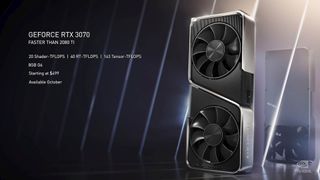
Given the success of the very top tier graphics cards (the Titan RTX being the current mega-card), Nvidia closed out the GPU reveal with the RTX 3090. This is a monster of a card that will sell for $1,499 - only a bit more than a current-gen 2080Ti - and offer up to 50 per cent more speed and performance compared to the RTX Titan with its 24GB of GDDR6X memory. It's mind-boggling in terms of price and power, but not totally off the table for those building mega machines. Nvidia is referring to this card as a 'BFGPU' (a 'Big Ferocious GPU'), but we all know what the 'BF' really stands for.
As a result, the 3070, the 3080, and the obscene 3090 all look to be shoe-ins for best graphics cards lists everywhere when they release over the course of the next couple of months.
Although the bigger, more powerful cards will always grab the headlines, we think the RTX 3070 is a real show-stopper here; it offers an affordable premium graphics card that will successfully bridge the 1440p - 4K faultline, and have the power to back it up without compromise. At just $499, it's a great proposition. That is, until the rumoured RTX 3060 gets announced (this might offer an even better level of performance-to-price value).
These cards will be landing on retailers' shelves and, presumably, in pre-built machines like the best gaming laptops and the best gaming PCs in the coming months; they've been given September or October release dates, so expect them soon.
Complementing the brutal power of the cards, Nvidia also revealed some other features of the 30 line as part of its new Ampere technology. One of which caught our eye particularly: Nvidia RTX IO. This is a process that will allow for incredibly speedy game loading and card performance, particularly when working with SSDs. It takes the work, and the burden, away from your CPU. This will mean that the best CPU for gaming might be freed up in terms of workload, allowing it to become more efficient in turn. Nice.
As this demonstrates, there's more than just the raw numbers and data to look into with these new cards, and the features that are present will also make them some of the must-haves of the next-gen of PC builds.
Looking for a deal on a current-gen machine? Check out the latest cheap gaming laptop deals and cheap gaming PC deals that we've rounded up.
Sign up to the 12DOVE Newsletter
Weekly digests, tales from the communities you love, and more
Rob is the Deputy Editor of sister site, TechRadar Gaming, and has been in the games and tech industry for years. Prior to a recent stint as Gaming Editor at WePC, Rob was the Commissioning Editor for Hardware at 12DOVE, and was on the hardware team for more than four years, since its inception in late 2018. He is also a writer on games and has had work published over the last six years or so at the likes of Eurogamer, RPS, PCGN, and more. He is also a qualified landscape and garden designer, so does that in his spare time, while he is also an expert on the virtual landscapes and environments of games and loves to write about them too, including in an upcoming book on the topic!
Most Popular




